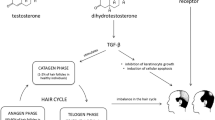Abstract
Analgesic effects of etidronate, alendronate and risedronate were compared in patients with osteoporosis and/or osteoarthritis by measuring the fall of skin impedance along with conventional subjective pain-estimation by visual rating scale (VRS). One hundred ninety-nine postmenopausal women consulting the Osteoporosis and Osteoarthritis Clinic of Katsuragi Hospital complaining of back and/or knee pain were randomly divided into four groups; Group A (49 subjects) given 5 mg/day alendronate, Group E (50 subjects) 200 mg/day etidronate, Group R (50 subjects) 2.5 mg/day risedronate and Group P no bisphosphonate. None of the four groups showed significant deviation from others as to age and parameters of bone metabolism. Proportions of subjects with osteoporosis was 18–40%. Those with osteoarthritis of the spine and knee, higher than Grade II according to the Nathan and Lawrence-Kellgren scale, respectively, was 45 and 61%, respectively, without a significant difference among the four groups. Significant positive correlation was found between the fall of skin impedance and pain expressed in VRS. Attenuation of exercise-induced fall of skin impedance and also subjective pain expressed in VRS was greatest in Group E with a highly significant difference from Groups A (P = 0.0002 and P < 0.0001), R (P < 0.0001 and P = 0.0014) and P (P < 0.0001 and P < 0.0001). Neither A nor R showed significant difference from P as to the fall of skin impedance. Among the three bisphosphonates tested, etidronate appeared to be outstanding in analgesic effects.



Similar content being viewed by others
References
O’Doherty DP, Bickerstaff DR, McCloskey EV, Hamdy NA, Beneton MN, Harris S, Mian M, Kanis JA (1990) Treatment of Paget’s disease of bone with aminohydroxybutylidene—bisphosphonate. J Bone Miner Res 5:483–491
Giannakenas C, Kalofonos HP, Apostolopoulos DJ, Zarakovitis J, Kosmas C, Vassilakos PJ (2000) Preliminary results of the use of Re186 HEDP for palliation of pain with metastatic bone disease. Am J Clin Oncol 23:83–88
Rosen LS, Gordon D, Kaminski M, Howell A, Belch A, Mackay J, Apffelstaedt J, Hussein M, Coleman RE, Reitsma DJ, Seaman JJ, Chen BL, Ambros Y (2001) Zoledronic acid versus pamidronate in the treatment of skeletal metastases in patients with breast cancer or osteolytic lesions of multiple myeloma : a phase III, double blind, comparative trial. Cancer J 7:377–387
Plotkin H, Rauch F, Zeitlin L, Munns C, Travers R, Glorieux FH (2003) Effect of pamidronate treatment in children with polyostotic fibrous dysplasia of bone. J Clin Endocrinol Metab 88:4569–4575
Glorieux FH (2000) Bisphosphonate therapy for severe osteogenesis imperfecta. J Pediat Endocrinol Metab Suppl 2:989–992
Ringe JD, Dorst A, Faber H, Iback K, Preuss J (2003) Three-monthly ibandronate bolus injection offers favourable tolerability and sustained efficacy advantage over two years in established corticosteroid-induced osteoporosis. Rheumatology 42:743–749
Pappagallo M, Breuer B, Schneider A, Sperber K (2003) Treatment of chronic mechanical spinal pain with intravenous pamidronate; a review of medical records. J Pain Symptom Manag 26:678–683
Gangji V, Appelboom T (1999) Analgesic effect of intravenous pamidronate on chronic back pain due to osteoporotic vertebral fractures. Clin Rheumatol 18:266–267
Fujita T, Fujii Y, Okada SF, Miyauchi A, Takagi Y (2001) Fall of skin impedance and bone and joint pain. J Bone Miner Metab 19:175–179
Fujita T, Fujii Y, Okada SF, Miyauchi A, Takagi Y (2001) Analgesic effect of etidronate on degenerative joint disease. J Bone Miner Metab 19:251–256
Fujita T, Ohue M, Fujii Y, Miyauchi A, Takagi Y (2002) The effect of active absorbable algal calcium (AAA Ca) with collagen and other matrix components on back and joint pain and skin impedance. J Bone Miner Metab 20:298–302
Fujita T, Ohue M, Fujii Y, Miyauchi A, Takagi Y (2003) Intra- individual variation in lumbar bone mineral density as a measure of spondylotic deformity in the elderly. J Bone Miner Metab 21:98–102
Smith MR (2004) Osteoclast-targeted therapy for prostate cancer. Curr Treat Options Oncol 5:367–375
Julius D, Basbaum AI (2001) Molecular mechanisms of nociception. Nature 413:203–210
Nagae M, Hiraga T, Wakabayashi H, Wang L, Iwata K, Yoneda T (2006) Osteoclasts play a part in pain due to the inflammation adjacent to bone. Bone 39:1107–1115
Nagae M, Hiraga T, Yoneda T (2007) Acidic microenvironment created by osteoclast causes bone pain associated with tumor colonization. J Bone Miner Metab 25:99–104
Ringe JD, Dorst A, Faber H, Ibach K, Sorenson F (2003) Intermittent intravenous ibandronate injections reduce vertebral fracture risk in corticosteroid-induced osteoporosis : results from a long-term comparative study. Osteoporos Int 14:801–807
Author information
Authors and Affiliations
Corresponding author
About this article
Cite this article
Fujita, T., Ohue, M., Fujii, Y. et al. Comparison of the analgesic effects of bisphosphonates: etidronate, alendronate and risedronate by electroalgometry utilizing the fall of skin impedance. J Bone Miner Metab 27, 234–239 (2009). https://doi.org/10.1007/s00774-009-0035-0
Received:
Accepted:
Published:
Issue Date:
DOI: https://doi.org/10.1007/s00774-009-0035-0




